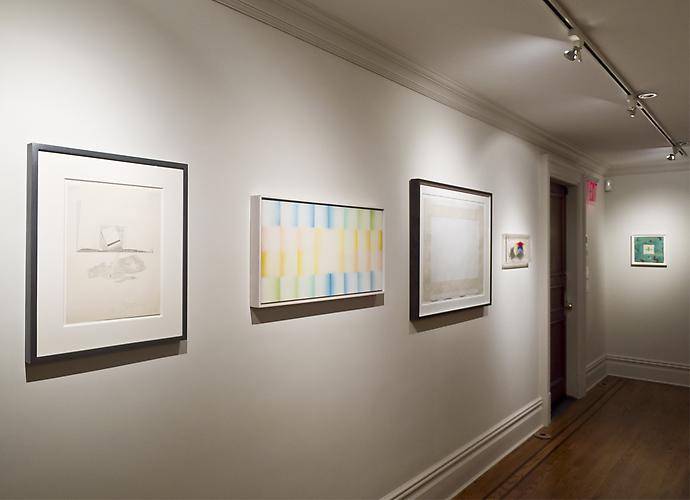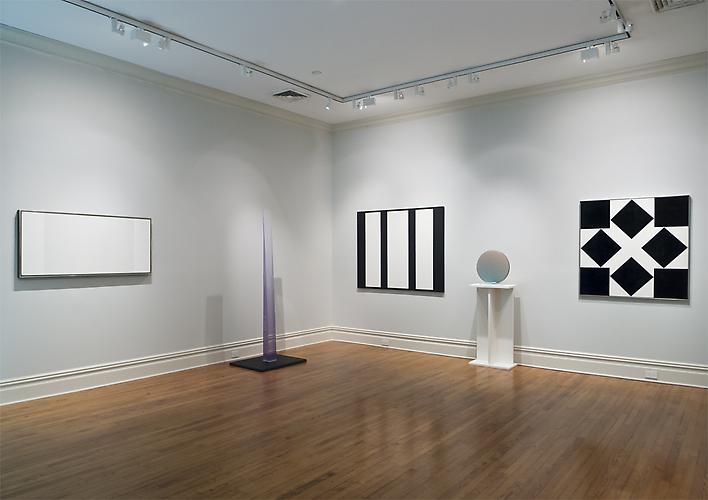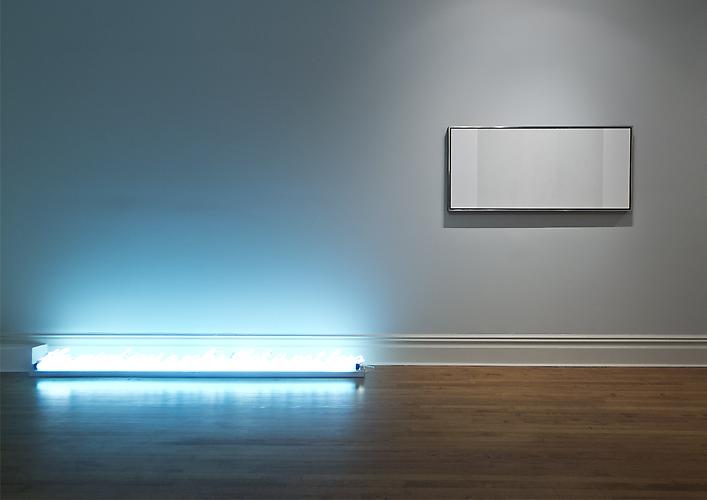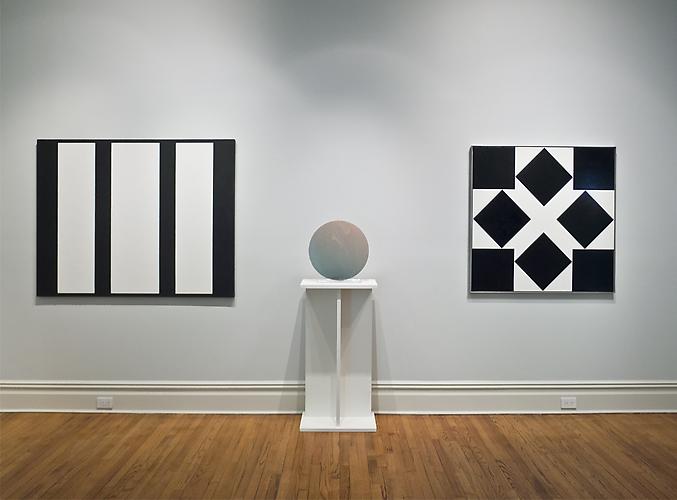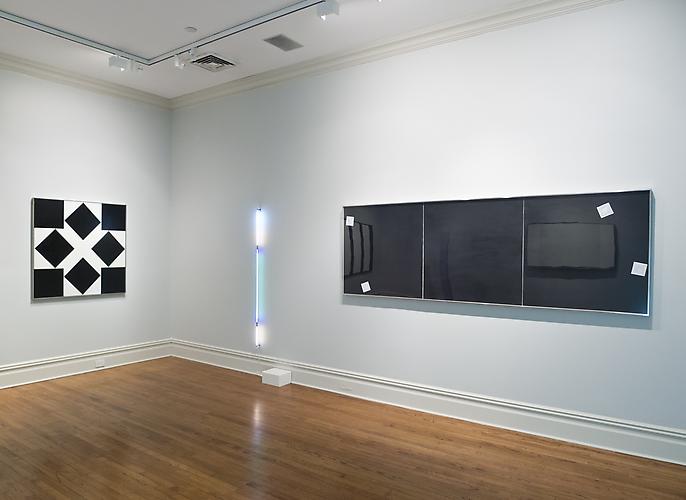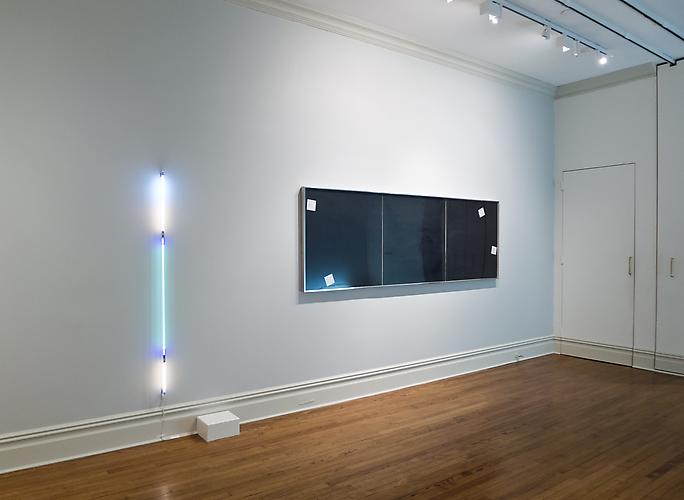Barbara Mathes Gallery is pleased to announce the opening of “California Dreaming,” an exhibition of work by postwar, Los Angeles-based artists. Surveying its development from modernist abstraction through Minimalism, Pop, and Conceptual art, the exhibition highlights key episodes in the emergence of one of the great hubs of American modern art.
The exhibition’s chronology begins with the taut, contemplative abstract paintings of John McLaughlin and Frederick Hammersley, whose interest in geometric composition and meditative calm presaged themes explored by a subsequent generation of Californian artists. These younger artists explored the perceptual nuances of novel synthetic materials, producing previously unseen effects with light and color—a trend exemplified here by works in cast resin by Peter Alexander and DeWain Valentine, and a glass microbead painting by Mary Corse. A similar spirit motivates a work by Judy Chicago, in which she used the sprayed acrylic lacquer used by custom car hobbyists to create a luminous and atmospheric abstract painting. A fascination with light permeates the exhibition, nowhere more than in neon works by Laddie John Dill and Ron Cooper, who used this commercial material to alter our perception of color and language respectively. Lastly, a major painting by Joe Goode points to California’s contributions to Pop art. Featuring imaginary Polaroids of blue skied clouds floating against a massive, nebulous black ground, the work plays with notions of illusion and materiality, creating the impression that the photographs are being blown across the work’s surface. Collectively, these works draw on cultural reference points such as Eastern philosophy, surfing, Hollywood, and the aerospace industry—articulating a history of American art that unfolded worlds away from the well-rehearsed narrative centered on New York.


